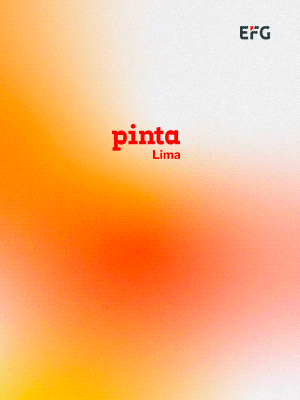CARLOS BUNGA’S NEW INSTALLATION AT SARASOTA ART MUSEUM
For the exhibition Reassembling Split Light at Sarasota Art Museum, Carlos Bunga will create a temporary cardboard structure in the 30-foot-high Koski Gallery located on the Museum’s third floor. Beginning and ending as a dialogue with the existing architecture, this installation will transform the gallery’s spatial configuration for the duration of the exhibition. By deploying light as his primary conceptual basis, just as James Turrell has done before him, Bunga explains that he will sculpt light, which cannot be touched, but only felt viscerally.

Accompanying Bunga’s site-responsive structure are selected photographs, videos, and paintings that further showcase the notion of light as a physical and phenomenological component, as well as a metaphor for reflection and hope in his own body of work. The exhibition will also include a set of drawings created after completing his onsite work. This post-installation phase of Bunga’s artistic practice allows him to reflect on the physical and spatial constraints that may hinder his creative process and conceptual scope. Bunga’s transformative installation and poetically resonant images invite visitors to consider how we shape and are shaped by our surroundings, to contemplate their ephemerality, and to attend to light in a time of darkness.
-
Carlos Bunga. Installation view of Agora at Museu de Arte Contemporanea de Serralves, Porto, Portugal, 2012. Cardboard, tape, latex, Paint and glue. Photo by Filipe Braga. Courtesy of the artist.
-
Carlos Bunga. Installation view of Agora at Museu de Arte Contemporanea de Serralves, Porto, Portugal, 2012. Cardboard, tape, latex, Paint and glue. Photo by Filipe Braga. Courtesy of the artist.
-
Carlos Bunga. Isntallation view of Under the Skin at the Chicago Architecture Biennial, Illinois, USA, 2015. Cardboard, tape, latex, paint and glue. Photo by Steve Hall. Courtesy of the artist.
-
Carlos Bunga. Installation view of Psychological Spaces at Secession, Wien, 2021. Cardboard, tape and glazings. Photo by Iris Ranzinger. Courtesy of Secession, Wien.
-
Carlos Bunga, Video Stills from Lamp, 2002. Single channel video, color, sound, loop (1 min 34 sec). Courtesy of the artist.
-
Caros Bunga poses with some of his works in his studio in Mataró, 2020. Photograph by Xavier Cervera. Courtesy of LA VANGUARDIA Magazine.
-
Carlos Bunga. Installation view of Home at CAM in Motion, Lisbon, 2022. Cardboard, tape, glazings and container. Photo by Pedro Jafuno. Courtesy of Centro de Arte Moderna Gulbenkian.
-
Carlos Bunga. Photo by Bruno Lopes, 2019. Courtesy of EDP Foundation.
Carlos Bunga is a multimedia artist internationally renowned for his imposing, site-responsive installations constructed with mundane, everyday materials, such as cardboard and masking tape. Originally trained as a painter, Bunga has developed a signature artistic language, “expanded painting,” which hybridizes and deconstructs the boundaries of painting, sculpture, architecture, and performance. Born into an Angolan refugee family in the Portuguese city of Porto, Bunga draws his inspiration from his makeshift childhood surroundings in deteriorating government housing. Employing a poetic approach across various mediums, he creates emotionally resonant and multivalent works. They not only invite the audience to question their position in the world around them, but also reflect on such timely topics as urban decay, migration, and displacement.
Bunga has had numerous solo and group exhibitions at notable art institutions worldwide, including Palacio de Cristal, Museo Nacional Centro de Arte Reina Sofía, Madrid, Spain (2022); Whitechapel Gallery, London (2020); Museum of Contemporary Art Toronto (2020); and Secession, Vienna (2020), to name only a few. Bunga lives and works in Barcelona, Spain.
Related Topics
May interest you
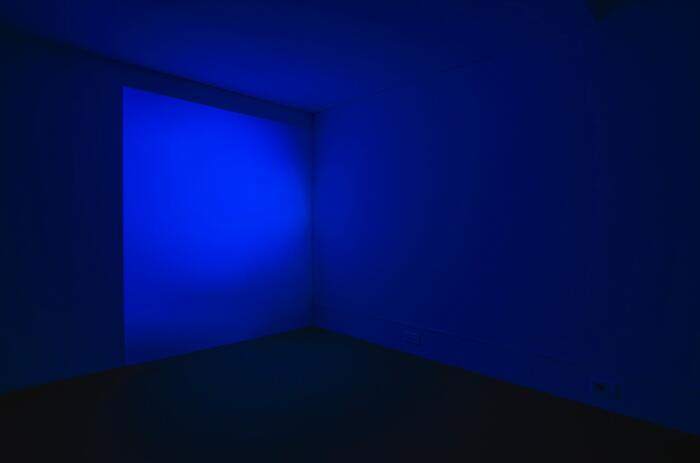
The Museum of Contemporary Art MAC/CCB in Lisbon, Portugal is looking for an Artistic Director for its new opening on October, 2023. Deadline to apply: August 31, 2023.
CALL FOR ARTISTIC DIRECTOR AT CENTRO CULTURAL DE BELÉM
The Museum of Contemporary Art MAC/CCB in Lisbon, Portugal is looking for an Artistic Director for its new opening on October, 2023. Deadline to apply: August 31, 2023.

The Museum of Contemporary Art MAC/CCB in Lisbon, Portugal is looking for an Artistic Director for its new opening on October, 2023. Deadline to apply: August 31, 2023.
CALL FOR ARTISTIC DIRECTOR AT CENTRO CULTURAL DE BELÉM
The Museum of Contemporary Art MAC/CCB in Lisbon, Portugal is looking for an Artistic Director for its new opening on October, 2023. Deadline to apply: August 31, 2023.

The wind blows where it wishes is Gabriel Chaile’s adobe sculpture on the High Line at 24th Street.
GABRIEL CHAILE AT HIGH LINE
The wind blows where it wishes is Gabriel Chaile’s adobe sculpture on the High Line at 24th Street.

The exhibition El paraíso en el nuevo mundo (Paradise in the New World) at Espacio El Dorado explores the implications of the imaginary of the earthly paradise in the colonizing process of America, and its persistence.
EXPLORING THE ORIGIN OF THE MYTH OF WEALTH IN THE "NEW WORLD"
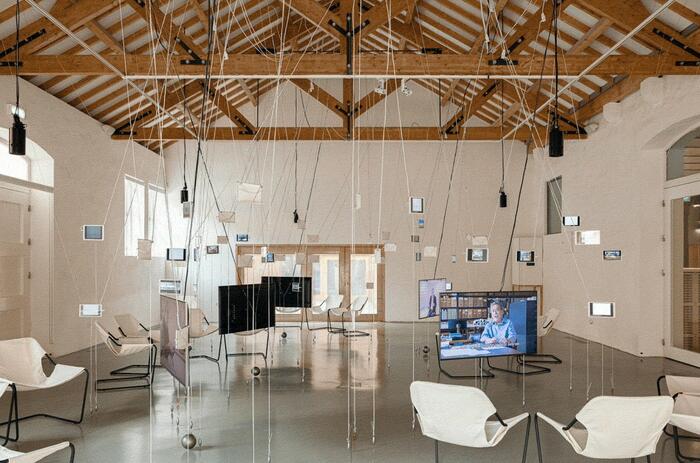
Four years after de donation of Paulo Mendes da Rocha’s entire archive to Casa da Architectura, the Portuguese Center for Architecture presented two simultaneous exhibtions, a book and a ten-month parallel program of activities around the artist’s principles, aesthetics and ethics.
CASA DA ARQUITECTURA PRESENTS TWO EXHIBITIONS BY PAULO MENDES DA ROCHA
Four years after de donation of Paulo Mendes da Rocha’s entire archive to Casa da Architectura, the Portuguese Center for Architecture presented two simultaneous exhibtions, a book and a ten-month parallel program of activities around the artist’s principles, aesthetics and ethics.
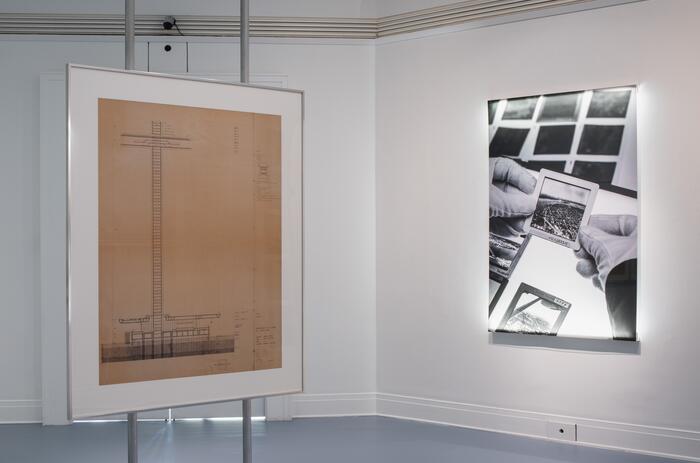
The Argentine architecture Amancio Williams was chosen for the iteration of Canadian Centre for Architecture’s Out of the Box exhibition series.
AMANCIO WILLIAMS IN THE CANADIAN CENTRE FOR ARCHITECTURE
The Argentine architecture Amancio Williams was chosen for the iteration of Canadian Centre for Architecture’s Out of the Box exhibition series.
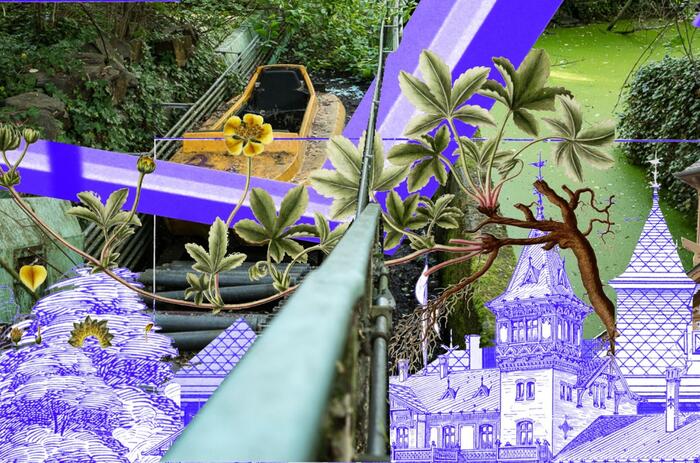
Spreepark Art Space presented a new international artist residency program in Berlin – an artistic workshop for an interdisciplinary group of four, or artists that have always wanted to collaborate with a collective of that size. Application deadline: October 26th, 2023.
ARTIST-IN-RESIDENCE OPEN CALL IN SPREEPARK ART SPACE, BERLIN
Spreepark Art Space presented a new international artist residency program in Berlin – an artistic workshop for an interdisciplinary group of four, or artists that have always wanted to collaborate with a collective of that size. Application deadline: October 26th, 2023.
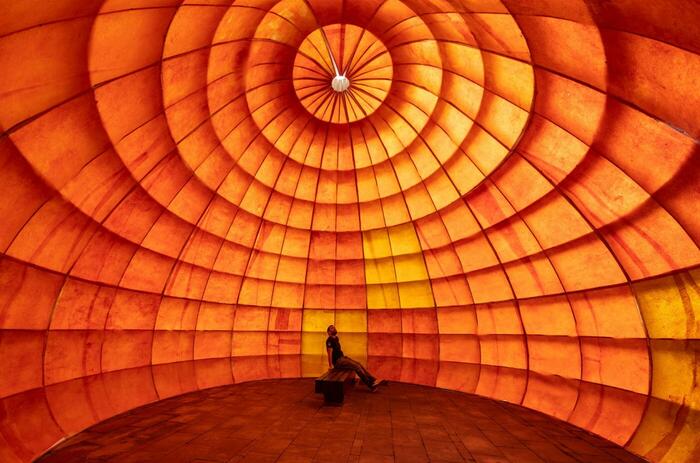
Concéntrico, Logroño International Festival of Architecture and Designs opens the program's competitions.
CALL FOR SUBMISSIONS: CONCÉNTRICO’S 10TH EDITION COMPETITIONS
Concéntrico, Logroño International Festival of Architecture and Designs opens the program's competitions.
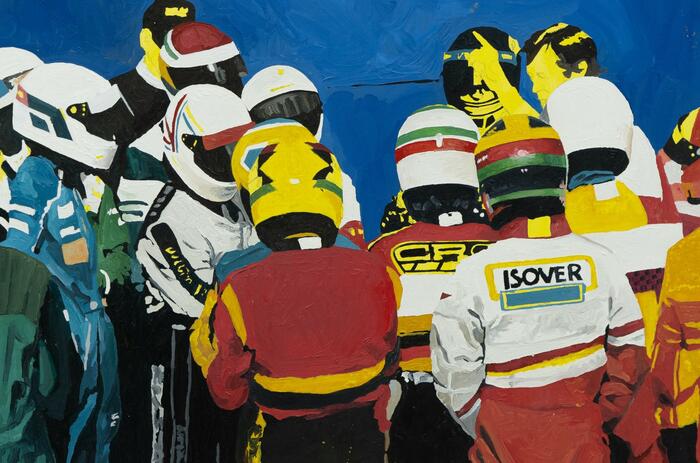
From September 13 to November 15, 2023, Venezuelan artist Pedro Medina inaugurated his first solo show in Spain, with Cerquone Gallery, at its headquarters in Madrid. Entitled Gran Turismo: Simulaciones Simultáneas (Big Tourism: Simultaneous Simulations), the exhibition is conceived as an exhibition of recent work on a process of observation of speed and resistance in painting.
BIG TOURISM: SIMULTANEOUS SIMULATIONS. PEDRO MEDINA AT CERQUONE MADRID
From September 13 to November 15, 2023, Venezuelan artist Pedro Medina inaugurated his first solo show in Spain, with Cerquone Gallery, at its headquarters in Madrid. Entitled Gran Turismo: Simulaciones Simultáneas (Big Tourism: Simultaneous Simulations), the exhibition is conceived as an exhibition of recent work on a process of observation of speed and resistance in painting.

The Museum of Contemporary Art MAC/CCB in Lisbon, Portugal is looking for an Artistic Director for its new opening on October, 2023. Deadline to apply: August 31, 2023.
CALL FOR ARTISTIC DIRECTOR AT CENTRO CULTURAL DE BELÉM
The Museum of Contemporary Art MAC/CCB in Lisbon, Portugal is looking for an Artistic Director for its new opening on October, 2023. Deadline to apply: August 31, 2023.

The wind blows where it wishes is Gabriel Chaile’s adobe sculpture on the High Line at 24th Street.
GABRIEL CHAILE AT HIGH LINE
The wind blows where it wishes is Gabriel Chaile’s adobe sculpture on the High Line at 24th Street.

The exhibition El paraíso en el nuevo mundo (Paradise in the New World) at Espacio El Dorado explores the implications of the imaginary of the earthly paradise in the colonizing process of America, and its persistence.
EXPLORING THE ORIGIN OF THE MYTH OF WEALTH IN THE "NEW WORLD"

Four years after de donation of Paulo Mendes da Rocha’s entire archive to Casa da Architectura, the Portuguese Center for Architecture presented two simultaneous exhibtions, a book and a ten-month parallel program of activities around the artist’s principles, aesthetics and ethics.
CASA DA ARQUITECTURA PRESENTS TWO EXHIBITIONS BY PAULO MENDES DA ROCHA
Four years after de donation of Paulo Mendes da Rocha’s entire archive to Casa da Architectura, the Portuguese Center for Architecture presented two simultaneous exhibtions, a book and a ten-month parallel program of activities around the artist’s principles, aesthetics and ethics.

The Argentine architecture Amancio Williams was chosen for the iteration of Canadian Centre for Architecture’s Out of the Box exhibition series.
AMANCIO WILLIAMS IN THE CANADIAN CENTRE FOR ARCHITECTURE
The Argentine architecture Amancio Williams was chosen for the iteration of Canadian Centre for Architecture’s Out of the Box exhibition series.

Spreepark Art Space presented a new international artist residency program in Berlin – an artistic workshop for an interdisciplinary group of four, or artists that have always wanted to collaborate with a collective of that size. Application deadline: October 26th, 2023.
ARTIST-IN-RESIDENCE OPEN CALL IN SPREEPARK ART SPACE, BERLIN
Spreepark Art Space presented a new international artist residency program in Berlin – an artistic workshop for an interdisciplinary group of four, or artists that have always wanted to collaborate with a collective of that size. Application deadline: October 26th, 2023.

Concéntrico, Logroño International Festival of Architecture and Designs opens the program's competitions.
CALL FOR SUBMISSIONS: CONCÉNTRICO’S 10TH EDITION COMPETITIONS
Concéntrico, Logroño International Festival of Architecture and Designs opens the program's competitions.

From September 13 to November 15, 2023, Venezuelan artist Pedro Medina inaugurated his first solo show in Spain, with Cerquone Gallery, at its headquarters in Madrid. Entitled Gran Turismo: Simulaciones Simultáneas (Big Tourism: Simultaneous Simulations), the exhibition is conceived as an exhibition of recent work on a process of observation of speed and resistance in painting.
BIG TOURISM: SIMULTANEOUS SIMULATIONS. PEDRO MEDINA AT CERQUONE MADRID
From September 13 to November 15, 2023, Venezuelan artist Pedro Medina inaugurated his first solo show in Spain, with Cerquone Gallery, at its headquarters in Madrid. Entitled Gran Turismo: Simulaciones Simultáneas (Big Tourism: Simultaneous Simulations), the exhibition is conceived as an exhibition of recent work on a process of observation of speed and resistance in painting.

The Museum of Contemporary Art MAC/CCB in Lisbon, Portugal is looking for an Artistic Director for its new opening on October, 2023. Deadline to apply: August 31, 2023.
CALL FOR ARTISTIC DIRECTOR AT CENTRO CULTURAL DE BELÉM
The Museum of Contemporary Art MAC/CCB in Lisbon, Portugal is looking for an Artistic Director for its new opening on October, 2023. Deadline to apply: August 31, 2023.

The wind blows where it wishes is Gabriel Chaile’s adobe sculpture on the High Line at 24th Street.
GABRIEL CHAILE AT HIGH LINE
The wind blows where it wishes is Gabriel Chaile’s adobe sculpture on the High Line at 24th Street.

The exhibition El paraíso en el nuevo mundo (Paradise in the New World) at Espacio El Dorado explores the implications of the imaginary of the earthly paradise in the colonizing process of America, and its persistence.
EXPLORING THE ORIGIN OF THE MYTH OF WEALTH IN THE "NEW WORLD"

Four years after de donation of Paulo Mendes da Rocha’s entire archive to Casa da Architectura, the Portuguese Center for Architecture presented two simultaneous exhibtions, a book and a ten-month parallel program of activities around the artist’s principles, aesthetics and ethics.
CASA DA ARQUITECTURA PRESENTS TWO EXHIBITIONS BY PAULO MENDES DA ROCHA
Four years after de donation of Paulo Mendes da Rocha’s entire archive to Casa da Architectura, the Portuguese Center for Architecture presented two simultaneous exhibtions, a book and a ten-month parallel program of activities around the artist’s principles, aesthetics and ethics.

The Argentine architecture Amancio Williams was chosen for the iteration of Canadian Centre for Architecture’s Out of the Box exhibition series.
AMANCIO WILLIAMS IN THE CANADIAN CENTRE FOR ARCHITECTURE
The Argentine architecture Amancio Williams was chosen for the iteration of Canadian Centre for Architecture’s Out of the Box exhibition series.

Spreepark Art Space presented a new international artist residency program in Berlin – an artistic workshop for an interdisciplinary group of four, or artists that have always wanted to collaborate with a collective of that size. Application deadline: October 26th, 2023.
ARTIST-IN-RESIDENCE OPEN CALL IN SPREEPARK ART SPACE, BERLIN
Spreepark Art Space presented a new international artist residency program in Berlin – an artistic workshop for an interdisciplinary group of four, or artists that have always wanted to collaborate with a collective of that size. Application deadline: October 26th, 2023.

Concéntrico, Logroño International Festival of Architecture and Designs opens the program's competitions.
CALL FOR SUBMISSIONS: CONCÉNTRICO’S 10TH EDITION COMPETITIONS
Concéntrico, Logroño International Festival of Architecture and Designs opens the program's competitions.

From September 13 to November 15, 2023, Venezuelan artist Pedro Medina inaugurated his first solo show in Spain, with Cerquone Gallery, at its headquarters in Madrid. Entitled Gran Turismo: Simulaciones Simultáneas (Big Tourism: Simultaneous Simulations), the exhibition is conceived as an exhibition of recent work on a process of observation of speed and resistance in painting.
BIG TOURISM: SIMULTANEOUS SIMULATIONS. PEDRO MEDINA AT CERQUONE MADRID
From September 13 to November 15, 2023, Venezuelan artist Pedro Medina inaugurated his first solo show in Spain, with Cerquone Gallery, at its headquarters in Madrid. Entitled Gran Turismo: Simulaciones Simultáneas (Big Tourism: Simultaneous Simulations), the exhibition is conceived as an exhibition of recent work on a process of observation of speed and resistance in painting.

The Museum of Contemporary Art MAC/CCB in Lisbon, Portugal is looking for an Artistic Director for its new opening on October, 2023. Deadline to apply: August 31, 2023.
CALL FOR ARTISTIC DIRECTOR AT CENTRO CULTURAL DE BELÉM
The Museum of Contemporary Art MAC/CCB in Lisbon, Portugal is looking for an Artistic Director for its new opening on October, 2023. Deadline to apply: August 31, 2023.

The wind blows where it wishes is Gabriel Chaile’s adobe sculpture on the High Line at 24th Street.
GABRIEL CHAILE AT HIGH LINE
The wind blows where it wishes is Gabriel Chaile’s adobe sculpture on the High Line at 24th Street.

The exhibition El paraíso en el nuevo mundo (Paradise in the New World) at Espacio El Dorado explores the implications of the imaginary of the earthly paradise in the colonizing process of America, and its persistence.
EXPLORING THE ORIGIN OF THE MYTH OF WEALTH IN THE "NEW WORLD"

Four years after de donation of Paulo Mendes da Rocha’s entire archive to Casa da Architectura, the Portuguese Center for Architecture presented two simultaneous exhibtions, a book and a ten-month parallel program of activities around the artist’s principles, aesthetics and ethics.
CASA DA ARQUITECTURA PRESENTS TWO EXHIBITIONS BY PAULO MENDES DA ROCHA
Four years after de donation of Paulo Mendes da Rocha’s entire archive to Casa da Architectura, the Portuguese Center for Architecture presented two simultaneous exhibtions, a book and a ten-month parallel program of activities around the artist’s principles, aesthetics and ethics.

The Argentine architecture Amancio Williams was chosen for the iteration of Canadian Centre for Architecture’s Out of the Box exhibition series.
AMANCIO WILLIAMS IN THE CANADIAN CENTRE FOR ARCHITECTURE
The Argentine architecture Amancio Williams was chosen for the iteration of Canadian Centre for Architecture’s Out of the Box exhibition series.

Spreepark Art Space presented a new international artist residency program in Berlin – an artistic workshop for an interdisciplinary group of four, or artists that have always wanted to collaborate with a collective of that size. Application deadline: October 26th, 2023.
ARTIST-IN-RESIDENCE OPEN CALL IN SPREEPARK ART SPACE, BERLIN
Spreepark Art Space presented a new international artist residency program in Berlin – an artistic workshop for an interdisciplinary group of four, or artists that have always wanted to collaborate with a collective of that size. Application deadline: October 26th, 2023.

Concéntrico, Logroño International Festival of Architecture and Designs opens the program's competitions.
CALL FOR SUBMISSIONS: CONCÉNTRICO’S 10TH EDITION COMPETITIONS
Concéntrico, Logroño International Festival of Architecture and Designs opens the program's competitions.

From September 13 to November 15, 2023, Venezuelan artist Pedro Medina inaugurated his first solo show in Spain, with Cerquone Gallery, at its headquarters in Madrid. Entitled Gran Turismo: Simulaciones Simultáneas (Big Tourism: Simultaneous Simulations), the exhibition is conceived as an exhibition of recent work on a process of observation of speed and resistance in painting.
BIG TOURISM: SIMULTANEOUS SIMULATIONS. PEDRO MEDINA AT CERQUONE MADRID
From September 13 to November 15, 2023, Venezuelan artist Pedro Medina inaugurated his first solo show in Spain, with Cerquone Gallery, at its headquarters in Madrid. Entitled Gran Turismo: Simulaciones Simultáneas (Big Tourism: Simultaneous Simulations), the exhibition is conceived as an exhibition of recent work on a process of observation of speed and resistance in painting.

The Museum of Contemporary Art MAC/CCB in Lisbon, Portugal is looking for an Artistic Director for its new opening on October, 2023. Deadline to apply: August 31, 2023.
CALL FOR ARTISTIC DIRECTOR AT CENTRO CULTURAL DE BELÉM
The Museum of Contemporary Art MAC/CCB in Lisbon, Portugal is looking for an Artistic Director for its new opening on October, 2023. Deadline to apply: August 31, 2023.

The wind blows where it wishes is Gabriel Chaile’s adobe sculpture on the High Line at 24th Street.
GABRIEL CHAILE AT HIGH LINE
The wind blows where it wishes is Gabriel Chaile’s adobe sculpture on the High Line at 24th Street.

The exhibition El paraíso en el nuevo mundo (Paradise in the New World) at Espacio El Dorado explores the implications of the imaginary of the earthly paradise in the colonizing process of America, and its persistence.
EXPLORING THE ORIGIN OF THE MYTH OF WEALTH IN THE "NEW WORLD"

Four years after de donation of Paulo Mendes da Rocha’s entire archive to Casa da Architectura, the Portuguese Center for Architecture presented two simultaneous exhibtions, a book and a ten-month parallel program of activities around the artist’s principles, aesthetics and ethics.
CASA DA ARQUITECTURA PRESENTS TWO EXHIBITIONS BY PAULO MENDES DA ROCHA
Four years after de donation of Paulo Mendes da Rocha’s entire archive to Casa da Architectura, the Portuguese Center for Architecture presented two simultaneous exhibtions, a book and a ten-month parallel program of activities around the artist’s principles, aesthetics and ethics.

The Argentine architecture Amancio Williams was chosen for the iteration of Canadian Centre for Architecture’s Out of the Box exhibition series.
AMANCIO WILLIAMS IN THE CANADIAN CENTRE FOR ARCHITECTURE
The Argentine architecture Amancio Williams was chosen for the iteration of Canadian Centre for Architecture’s Out of the Box exhibition series.

Spreepark Art Space presented a new international artist residency program in Berlin – an artistic workshop for an interdisciplinary group of four, or artists that have always wanted to collaborate with a collective of that size. Application deadline: October 26th, 2023.
ARTIST-IN-RESIDENCE OPEN CALL IN SPREEPARK ART SPACE, BERLIN
Spreepark Art Space presented a new international artist residency program in Berlin – an artistic workshop for an interdisciplinary group of four, or artists that have always wanted to collaborate with a collective of that size. Application deadline: October 26th, 2023.

Concéntrico, Logroño International Festival of Architecture and Designs opens the program's competitions.
CALL FOR SUBMISSIONS: CONCÉNTRICO’S 10TH EDITION COMPETITIONS
Concéntrico, Logroño International Festival of Architecture and Designs opens the program's competitions.

From September 13 to November 15, 2023, Venezuelan artist Pedro Medina inaugurated his first solo show in Spain, with Cerquone Gallery, at its headquarters in Madrid. Entitled Gran Turismo: Simulaciones Simultáneas (Big Tourism: Simultaneous Simulations), the exhibition is conceived as an exhibition of recent work on a process of observation of speed and resistance in painting.
BIG TOURISM: SIMULTANEOUS SIMULATIONS. PEDRO MEDINA AT CERQUONE MADRID
From September 13 to November 15, 2023, Venezuelan artist Pedro Medina inaugurated his first solo show in Spain, with Cerquone Gallery, at its headquarters in Madrid. Entitled Gran Turismo: Simulaciones Simultáneas (Big Tourism: Simultaneous Simulations), the exhibition is conceived as an exhibition of recent work on a process of observation of speed and resistance in painting.

